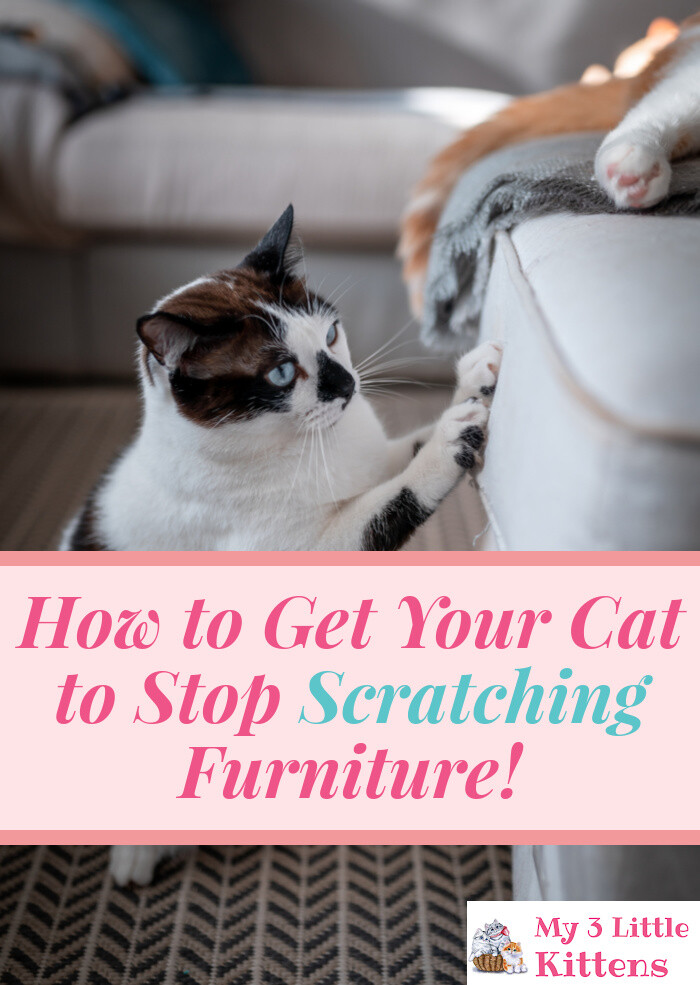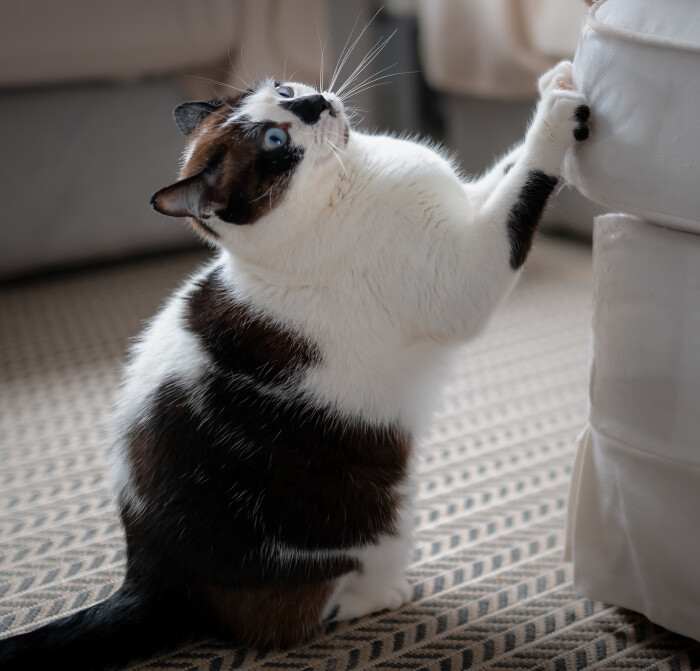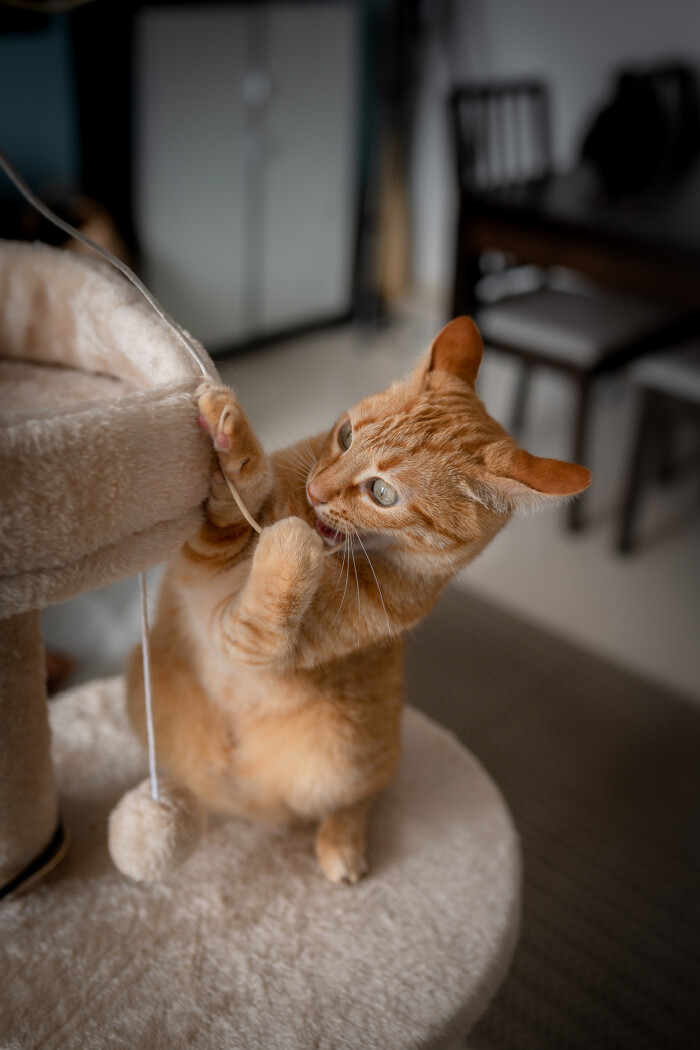Cats are beloved companions, but their natural instinct to scratch can wreak havoc on our furniture. However, there’s no need to sacrifice your favorite sofa to your feline friend’s claws.
With a bit of patience, understanding, and the right approach, you can train your cat to redirect their scratching behavior! In this guide on How to Get Your Cat to Stop Scratching Furniture, we’ll explore effective strategies to help you and your cat live in harmony without sacrificing your furniture.

How to Get Your Cat to Stop Scratching Furniture
Understanding the Need to Scratch: Scratching is a natural behavior for cats that serves various purposes, including sharpening their claws, stretching their muscles, and marking their territory.
Instead of trying to eliminate this instinct, it’s better to redirect it towards appropriate surfaces.

Provide Alternatives: To protect your furniture, offer your cat suitable scratching alternatives. Invest in a variety of scratching posts, pads, and boards made from different materials like sisal, cardboard, or carpet.
Cats have preferences, so experiment to find what your furry friend likes best.

Strategic Placement: Place the scratching posts in areas where your cat likes to scratch. If they have a favorite spot on the couch, put a scratching post nearby to redirect their attention.
Gradually move the post to a more convenient location once they start using it regularly.

More Ways to Help Your Cat Stop Scratching!
Use Catnip or Cat Attractants: Sprinkle catnip or cat attractant on the scratching posts to make them more appealing. This can entice your cat to use the designated scratching areas instead of your furniture.
Be patient, as some cats may take time to respond to these attractants.

Positive Reinforcement: Whenever you catch your cat using the scratching post, shower them with praise and treats. Positive reinforcement will help them associate the act of scratching the post with a rewarding experience.
Conversely, avoid negative reinforcement, such as scolding or punishment, as it can create anxiety and worsen the problem.

Trim Your Cat’s Nails: Regular nail trims can reduce the damage caused by scratching. If you’re unsure how to trim your cat’s nails, consult your veterinarian or a professional groomer for guidance.
Soft nail caps, which can be applied to your cat’s claws, are also available as an alternative to prevent scratching damage.

Protect Furniture: In the initial stages of training, consider using furniture protectors or double-sided tape on the areas your cat targets. Cats often dislike the sticky texture of the tape, deterring them from scratching the protected surfaces.

Consult a Professional: If your cat’s scratching behavior persists despite your efforts, it may be beneficial to consult with a veterinarian or a professional animal behaviorist. They can provide personalized advice and strategies to address any underlying issues contributing to the behavior.
With a combination of patience, positive reinforcement, and appropriate alternatives, you can successfully train your cat to stop scratching your furniture.
Remember that understanding and accommodating your cat’s natural instincts is key to creating a harmonious living environment for both you and your feline friend.
Vicky says
Do you recommend using a litter liner in your cats litter box ?
Kristen says
I personally don’t use litter liners because I find they tear and rip to easily when my cat claws the litter. However, they can be used if you find it a cleaner way to handle your litter.